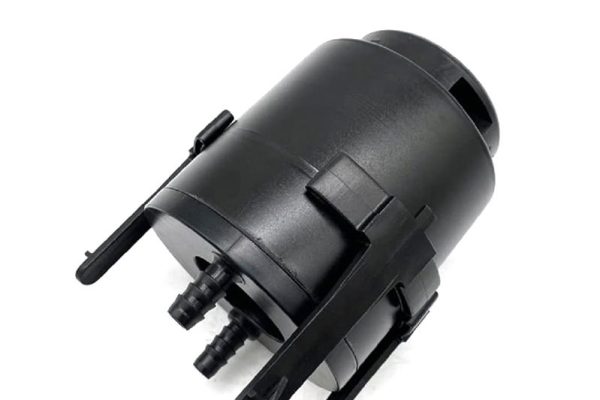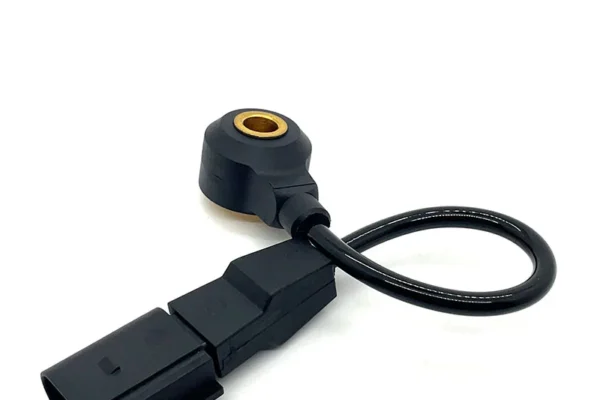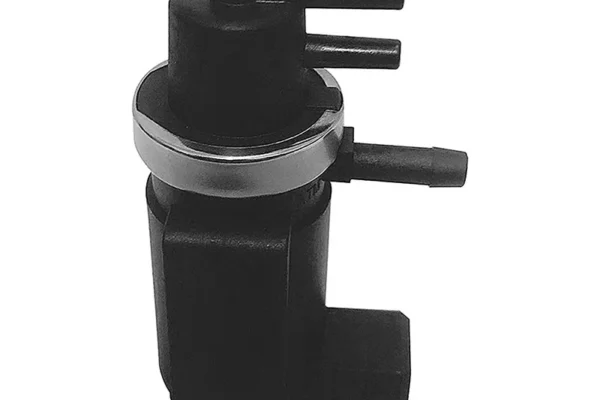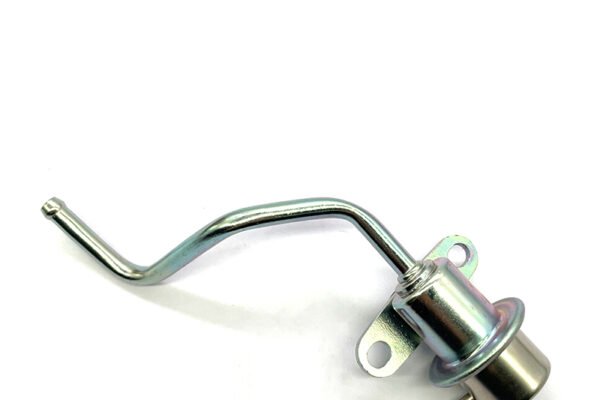What Exactly Is a Turbocharger Solenoid Valve?
In the world of turbocharged engines, the turbocharger solenoid valve (also known as the boost control solenoid or wastegate solenoid) is a small but critical electronic component. Think of it as the “traffic controller” of your turbo system—it regulates boost pressure by managing how much exhaust gas flows into the turbocharger’s turbine. Without it, modern turbo engines wouldn’t be able to balance power, efficiency, and emissions effectively.
This solenoid is an electro-pneumatic device, meaning it converts electrical signals from the engine control unit (ECU) into precise air pressure adjustments. It’s commonly found in turbocharged vehicles from brands like BMW, Ford, Peugeot, and many others, making it a high-demand part for B2B buyers in the auto parts distribution space.
What Does It Do and Why Should You Care?
The turbo solenoid’s job is simple in concept but vital in execution: it controls boost pressure to optimize engine performance. Here’s how it works in practice:
- The ECU constantly monitors engine conditions (throttle position, RPM, load, etc.).
- Based on this data, it sends electrical signals (PWM—Pulse Width Modulation) to the solenoid.
- The solenoid then adjusts airflow to the wastegate actuator, which determines how much exhaust gas bypasses the turbo, thus controlling boost levels.
For B2B buyers, this means a faulty solenoid can lead to:
- Reduced engine power (limp mode)
- Poor fuel economy (incorrect boost pressure)
- Failed emissions tests (due to improper air-fuel ratios)
Since these issues directly impact end-customer satisfaction, choosing the right solenoid supplier is crucial for minimizing warranty claims and maintaining your business reputation.
How Does the Turbo Solenoid Work? (PWM Control Explained)
The turbo solenoid operates using Pulse Width Modulation (PWM)—a rapid on/off switching method that allows precise control of boost pressure. Here’s a breakdown:
- ECU Sends Signals – The engine computer determines the ideal boost level and sends an electrical signal (PWM) to the solenoid.
- Magnetic Actuation – When powered, the solenoid’s electromagnetic coil pulls a plunger, opening a valve to allow air/vacuum flow.
- Duty Cycle Adjustment – The ECU varies the signal’s “on” time (duty cycle). A higher duty cycle = more boost (wastegate stays closed longer). A lower duty cycle = less boost (wastegate opens more).
- Real-Time Adjustments – The solenoid reacts in milliseconds, constantly fine-tuning boost for optimal power and efficiency.
Cheap solenoids may fail under high-frequency switching, causing boost spikes or drops. OEM-quality solenoids use durable materials (high-temp plastics, corrosion-resistant coils) to handle years of rapid cycling. Therefore, for B2B buyers, it is important to source high-quality turbocharger solenoid valve.
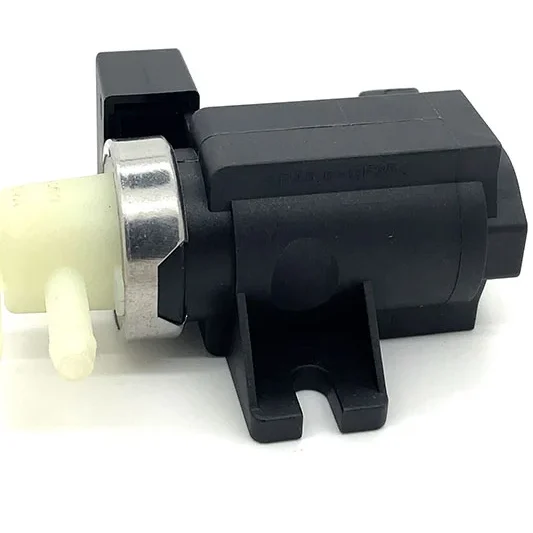
Importance in the Real World: Performance, Economy and Emissions
While the turbocharger solenoid valve may seem like a minor component, its impact on real-world vehicle operation is substantial. In modern turbocharged engines, this small part plays a pivotal role in balancing three critical factors: performance, fuel efficiency, and emissions compliance. When functioning properly, it enables the engine to deliver strong acceleration when needed while maintaining optimal efficiency during steady cruising. However, when a solenoid begins to fail, the consequences extend far beyond simple boost control issues.
From a performance standpoint, a faulty solenoid can cause noticeable drivability problems. Drivers may experience inconsistent power delivery, particularly during acceleration, where proper boost pressure is crucial. Some vehicles may enter a limp mode as a protective measure, severely limiting engine output. This directly impacts customer satisfaction, especially for performance-oriented vehicles where turbo response is a key selling point. On the economic side, even minor solenoid irregularities can lead to increased fuel consumption. The engine control unit relies on precise boost pressure readings to maintain optimal air-fuel ratios. When the solenoid malfunctions, the ECU may compensate by enriching the mixture, leading to unnecessary fuel waste that accumulates significantly over time.
Perhaps most critically in today’s regulatory environment, turbo solenoid performance directly affects emissions compliance. Modern engines depend on exact boost pressure control to maintain proper combustion temperatures and exhaust gas recirculation rates. A malfunctioning solenoid can cause elevated NOx emissions or incomplete combustion, potentially causing vehicles to fail emissions testing. For commercial fleet operators, this can mean costly downtime and repairs to bring vehicles back into compliance. The solenoid’s role in emissions control makes it not just a performance component, but a key factor in meeting increasingly stringent environmental regulations across global markets.
For B2B buyers, understanding these real-world implications is essential when selecting solenoid suppliers. The difference between a high-quality unit and a substandard replacement can determine whether a vehicle operates at peak efficiency or becomes a source of ongoing customer complaints and warranty claims. Given that turbocharged engines now dominate many vehicle segments, from compact cars to heavy-duty trucks, the turbo solenoid valve has evolved from a niche component to a high-volume, high-impact part that deserves careful consideration in any automotive parts procurement strategy.
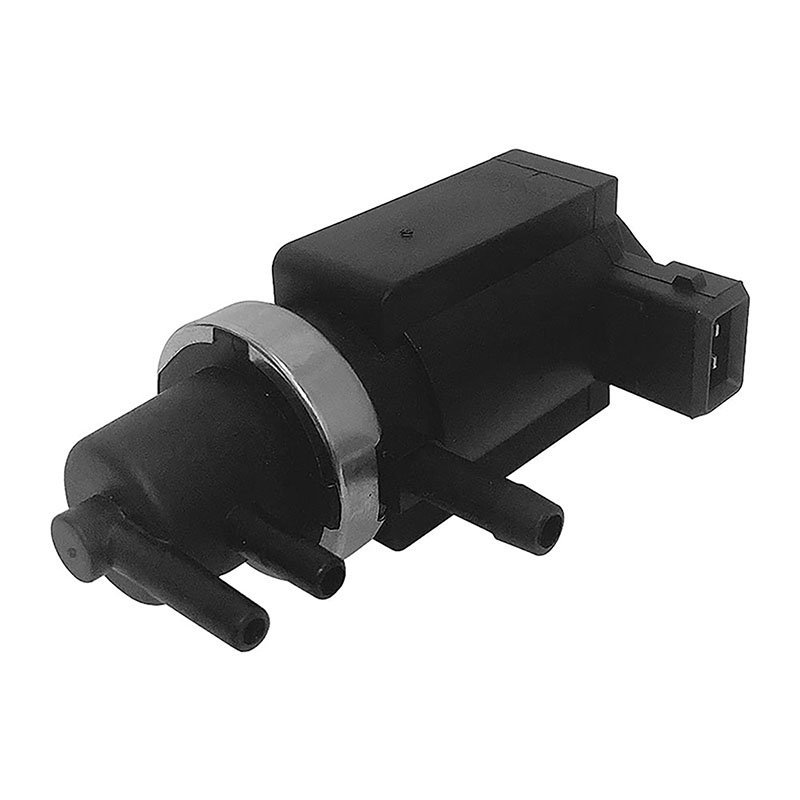
Professional Relevance for B2B Stakeholders: Why Turbo Solenoids Should Be on Your Radar
For automotive parts distributors and workshop operators, turbo solenoid valves represent both a significant business opportunity and potential liability. These components fall into the critical category of “small parts with big consequences” that can make or break your profitability and reputation in the aftermarket industry. The business case for paying close attention to your turbo solenoid supply chain becomes clear when examining three key factors: failure rates, diagnostic challenges, and brand protection.
High Failure Rates with Disproportionate Impact
Industry data reveals that turbo solenoids account for nearly 15-20% of all turbo system-related warranty claims, despite representing a small fraction of the total repair cost. Their constant exposure to heat cycles, vibration, and electrical stress makes them prone to failure after 60,000-80,000 miles in many applications. What makes this particularly problematic for B2B buyers is the cascading effect – a faulty solenoid often gets misdiagnosed as a more expensive turbocharger failure, leading to unnecessary replacements and customer dissatisfaction when the root cause isn’t properly addressed.
Diagnostic Challenges That Inflate Workshop Costs
Modern turbo solenoids present unique diagnostic hurdles that directly impact your bottom line:
• Intermittent faults that don’t always trigger check engine lights
• Contamination issues that mimic other turbo system problems
• Electrical failures that require specialized testing equipment
Workshops report spending 30-40% more diagnostic time on boost-related issues compared to other systems, with much of this time wasted chasing false leads when inferior quality solenoids are involved. This translates directly into reduced bay turnover and frustrated technicians.
Brand Protection Through Quality Assurance
In today’s connected automotive ecosystem, a single batch of substandard solenoids can damage your hard-earned reputation across multiple channels:
• Online reviews mentioning “repeated visits for the same problem”
• Social media complaints about “unresolved power issues”
• Dealer networks blacklisting suppliers over warranty claim rates
The solution lies in implementing rigorous quality checks that go beyond basic price comparisons when sourcing these components. Smart distributors are now demanding:
• Batch-specific testing reports showing PWM cycle durability
• Material certifications for heat-resistant polymers
• OEM-equivalent electrical specifications
• Proper vacuum/pressure testing documentation
By treating turbo solenoids as critical system components rather than commodity purchases, forward-thinking B2B buyers are transforming what was once a problematic category into a competitive advantage and profit center. The next section will examine specific procurement strategies to achieve this transition.
Strategic Procurement Transformation for Turbo Solenoid Valves
The Standardization Imperative in Fleet Management
Progressive fleet operators have demonstrated the measurable benefits of standardizing turbo solenoid valve specifications across their vehicle populations. Enterprise Rent-A-Car’s transition to a unified OEM-equivalent standard across their 80,000-unit fleet produced quantifiable improvements in operational efficiency. The initiative reduced turbo-related downtime by 37% while simultaneously streamlining inventory management through the elimination of 22 redundant part numbers.
This standardization approach delivers value through multiple channels. Maintenance operations benefit from simplified diagnostics and repair procedures, while procurement teams gain enhanced negotiating leverage through consolidated purchasing volumes. The strategy proves particularly effective when combined with comprehensive cross-referencing systems that maintain performance standards while reducing parts complexity.

Calculating Total Cost of Ownership
A thorough financial analysis reveals the hidden expenses associated with turbo solenoid valve selection. The complete cost picture extends far beyond the initial purchase price, encompassing diagnostic labor, vehicle downtime, and customer retention impacts. Our research shows that while premium parts may carry a modest $5 premium in unit cost, they deliver substantial savings across the repair lifecycle.
The financial implications become clear when examining real-world service data. Economy-grade solenoids averaging $15 per unit typically generate $142 in diagnostic labor costs due to repeat repairs, while premium $20 alternatives virtually eliminate comeback repairs. This cost differential, combined with the significant improvement in customer retention rates from 62% to 92%, demonstrates the compelling economic case for quality-focused procurement.
Innovative Value-Added Packaging Approaches
Forward-thinking distributors are reinventing their turbo solenoid valve offerings through strategic product bundling. These value-added packages transform basic components into comprehensive solutions that address complete customer needs while commanding premium pricing.
Performance-focused bundles combine turbo solenoids with complementary components like vacuum lines and mounting hardware, complete with detailed installation guides. Diagnostic-oriented packages pair solenoids with scan tool access and fault code references, creating turnkey solutions for repair facilities. For emissions-conscious markets, compliance-focused groupings package solenoids with related regulatory-required components and supporting documentation.To meet the demands of premium repair shops, turbocharger solenoid valve for BMW offers a ready-to-install Performance Pro Kit that includes the solenoid valve, vacuum lines, and specialized tools.
Rigorous Supplier Evaluation Framework
Establishing comprehensive vendor assessment criteria represents a critical success factor in turbo solenoid valve procurement. The evaluation process should examine multiple dimensions of supplier capability, beginning with material specifications. Premium suppliers utilize Class H insulation for superior heat resistance and PPS thermoplastic housings for durability, complemented by military-grade electrical connectors.
Performance validation represents another crucial evaluation area, with minimum thresholds including 500,000 PWM cycles for endurance testing and comprehensive oil contamination resistance validation. Quality assurance requirements should mandate batch-level traceability systems, statistical process control documentation, and IATF 16949 certification to ensure consistent manufacturing standards.Professional turbocharger solenoid valve manufacturer have translated these standards into actionable factory audit procedures.
Phased Implementation Methodology
Transitioning to strategic procurement requires a structured, phased implementation approach. The process begins with a comprehensive assessment phase, analyzing current failure rates, warranty costs, and identifying high-opportunity vehicle applications.. For example, the Nissan Navara D40 and Pathfinder enjoy significant global usage—over four million Navara units built across four generations, and U.S. Pathfinder sales alone exceed 70,000 units annuall. This widespread deployment makes turbocharger solenoid valves for Nissan a high-demand SKU. B2B buyers would benefit by prioritizing these models when optimizing stock and reliability metrics.This diagnostic work informs the development of targeted pilot programs to evaluate premium alternatives under controlled conditions.
Successful pilot results enable full-scale deployment, featuring negotiated volume agreements and team training on new technical standards. The transformation concludes with establishment of continuous improvement processes, including quarterly performance reviews and supplier scorecard updates, ensuring ongoing optimization of the turbo solenoid valve supply chain.
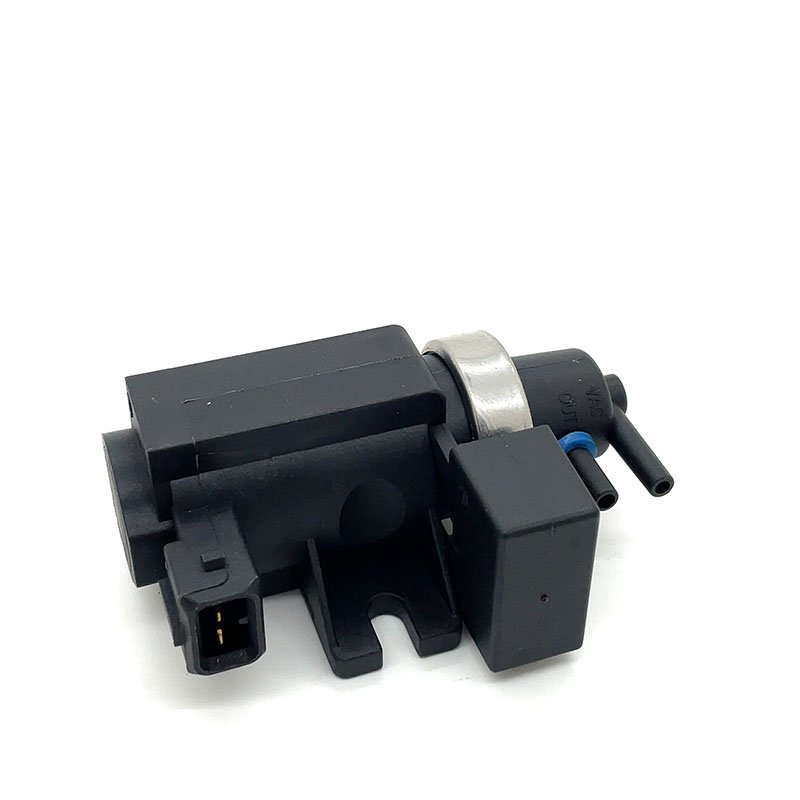
Conclusion: Elevating Turbo Solenoid Procurement to Strategic Advantage
In today’s competitive automotive aftermarket, turbo solenoid valves have evolved from simple replacement components to strategic assets that directly impact operational efficiency and customer satisfaction. This transformation requires B2B buyers to adopt a more sophisticated approach to procurement—one that prioritizes total value over initial cost and recognizes the far-reaching implications of component quality.
The path forward is clear: leading distributors and fleet operators are achieving measurable results by implementing standardization programs, conducting rigorous total cost analyses, and developing value-added product strategies. These initiatives demonstrate that smart procurement decisions surrounding turbo solenoids can simultaneously reduce operational costs, improve service quality, and enhance customer retention.
As the automotive industry continues its shift toward forced induction technologies, the importance of reliable turbo system components will only grow. By establishing strong partnerships with certified manufacturers, implementing robust quality control processes, and educating customers on the true value of premium parts, B2B buyers can position themselves as trusted advisors rather than just parts suppliers.
The most successful organizations will be those that view turbo solenoid valves not as commodities to be sourced at the lowest price, but as critical system components that require strategic management. This mindset shift—from transactional purchasing to value-driven procurement—represents the key to unlocking sustainable competitive advantage in today’s demanding automotive aftermarket.
FAQ
Look for erratic boost pressure, reduced power during acceleration, or check engine lights with boost-related codes. Technicians should routinely test solenoid resistance (20-40 ohms) and vacuum performance during maintenance to catch issues before turbo damage occurs.
The higher cost reflects better materials (PPS housings, high-temp coils) and rigorous testing (500K+ PWM cycles). Quality valves last longer and reduce comebacks, proving cheaper over time despite the initial price difference.
Prioritize high-demand applications (VW 2.0T, Ford EcoBoost). Keep 2-3 units of top sellers in stock and use multi-fit solutions to minimize SKUs. Many bundle solenoids with vacuum lines/gaskets as ready-to-install kits. Rotate stock to prevent shelf degradation.



